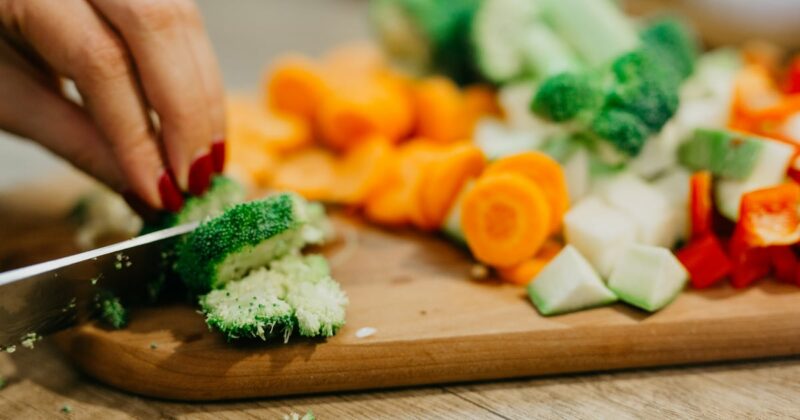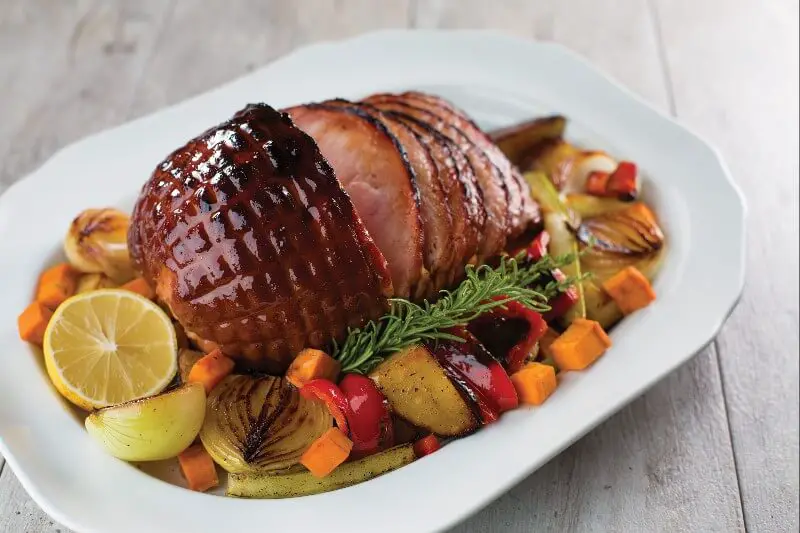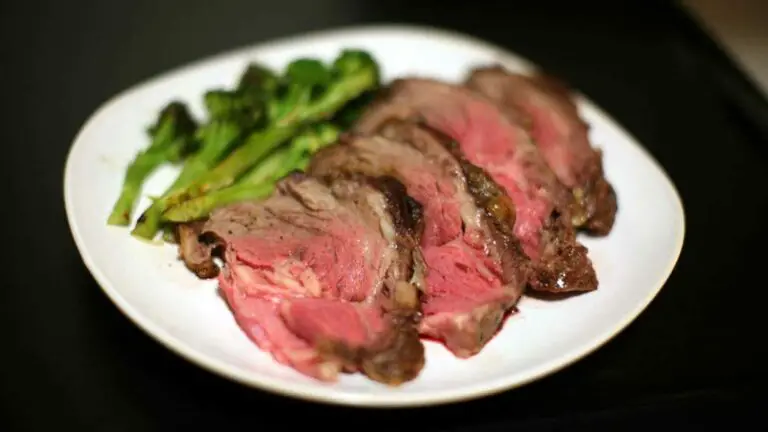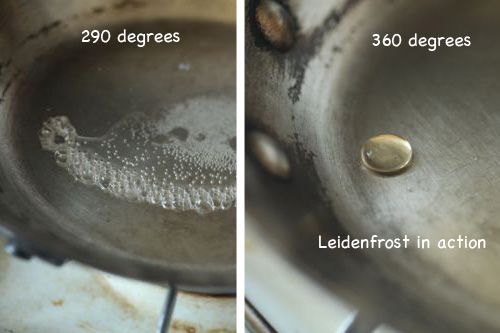Halibut is a delicious fish that is rich in omega-3 fatty acids and other essential nutrients. Cooking halibut to the right temperature is crucial for both flavor and safety reasons. Overcooking or undercooking it could potentially ruin the taste of the fish and put your health at risk. In this article, we will explore exactly what internal temperature halibut should be cooked to, so you can enjoy it at its best.
Temperature for Halibut Cooking
The recommended internal temperature for fully cooked halibut is 145°F (63°C). However, don’t rely only on color and physical features to check if the fish has been properly cooked as these can be misleading. Even when fully browned, some parts of the fish could remain raw inside.
It’s worth noting that different people have different preferences when it comes to how well-done their halibut should be. Some prefer rare or medium-rare, while others like it more well-done. The following are recommended temperatures for different levels of doneness in halibut:
- Rare: Internal temperature of 120°F (49°C)
- Medium-rare: Internal temperature of 130°F (54°C)
- Medium: Internal temperature of 140°F (60°C)
- Well-done: Internal temperature of 150°F (66°C) or above
Keep in mind that consuming undercooked fish could increase your risk of foodborne illness due to harmful bacteria such as salmonella or listeria.
Understanding Fish Anatomy
To understand why cooking temperatures vary depending on different parts, let’s consider how the anatomy of fish influences those temperatures. Fish have three main parts — head, body, and tail. These parts affect varying degrees of internal temperatures when cooked.
The head takes the longest time to reach a safe cooking temperature because it has the lowest heat conductivity among all the parts of a fish due to being surrounded by bones and rich in fat. Meanwhile, the tail gets to the desired temperature quickly thanks to its thinness.
How to Check Halibut Internal Temperature
The safest way to check if your halibut has been cooked properly is by using a thermometer. The thermometer should be inserted into the thickest part of the fish fillet or steak until it reaches the center. Be careful not to touch any bones while inserting it, as this could give you a false reading.
An alternative method that some people use is flaking apart the fish with a fork. If it flakes easily all the way through, then you can consider it done. However, keep in mind that this method may not be as reliable as using a thermometer.
Preparation Tips for Cooking Halibut
Before cooking halibut, ensure that it’s fully thawed if frozen. Leaving it out at room temperature may promote bacterial growth, so we recommend thawing it in the refrigerator overnight if possible.
Another important tip is to handle fresh halibut carefully to avoid cross-contamination while preparing it raw before cooking. Use separate cutting boards and utensils for raw meat and other food items, wash your hands frequently and sanitize any surfaces that have come in contact with raw fish.
Recipes For Halibuts Cooking
Halibut has many different recipes because of how diverse its meat is. Many professional chefs prepare their halibuts differently depending on how fancy they want their dish to look like or what ingredients they want to incorporate into their dish.
Here are three delicious recipes that will give you an idea of how versatile halibuts can be:
Grilled Halibut with Lemon-Caper Sauce
- 4 halibut fillets (6 ounces each)
- Salt and pepper
- 1 tablespoon olive oil
- 2 tablespoons unsalted butter
- 2 garlic cloves (minced)
- 1/3 cup white wine
- 1 tablespoon capers (drained and rinsed)
- Juice of 1 lemon
- 1 teaspoon Dijon mustard
Instructions:
- Preheat the grill to medium-high heat.
- Season halibut fillets with salt and pepper on both sides.
- Brush each side of the fillets with olive oil.
- Grill fillets until slightly browned on each side.
- In a saucepan, melt butter over medium heat.
- Add garlic to the butter and stir for around one minute.
- Add white wine, capers, lemon juice, Dijon mustard, and bring it to a simmer for two minutes while stirring occasionally until a thickened sauce forms.
- Spoon sauce over the grilled halibut fillets.
Baked Halibut with Parmesan Crust
- 4 halibut fillets (6 ounces each)
- Salt
- Pepper
- ½ cup grated Parmesan cheese
- ¼ cup plain breadcrumbs
- 3 tablespoons melted butter
Instructions:
- Preheat oven to 400°F (205°C).
- Season halibut fillets with salt and pepper on both sides.
- Place them in a greased baking dish.
- Combine Parmesan cheese, breadcrumbs, and melted butter in a bowl until well mixed.
- Sprinkle mixture over halibut uniformly.
- Bake uncovered in preheated oven for about 15 minutes or until fish is opaque.
Halibut Burger
- 4 halibut steaks(5 ounces each burger formed patties.)
- Salt and pepper
- Olive oil
- BBQ sauce
- Brioche buns For dressing:-
- Grated carrots
- Chopped red onion
Instructions:
1) Preheat grill to medium-high heat to cook evenly on both sides. 2) Season halibut steaks with salt and pepper. 3) Drizzle a little olive oil over both the slices of fish and place them gently onto the grill grates. 4) Turn them occasionally while cooking, shifting their positions on the grate to even out hot spots if needed. 5) Keep brushing BBQ sauce to both sides. 6) Grill until it colors on one side for 4-5 minutes each side 7) Top halibut burgers with grated carrots, chopped red onion, and another type of dressings you prefer. 8) Serve it between Brioche buns
Conclusion
It’s important to know what internal temperature halibut should be cooked because undercooked fish could harm your health whereas overcooked fish would ruin its taste. The recommended internal temperature for fully cooked halibut is 145°F (63°C). With the tips shared in this article, you can now cook delicious halibut dishes that are perfectly seasoned and safe to eat. So, whether you prefer grilled, baked or burger-form Halibuts- there is always some recipe suitable for your taste preferences.
Q&A
Q: What is the recommended internal temperature for cooking halibut?
A: The ideal internal temperature for halibut is between 135°F to 140°F (57°C to 60°C). This ensures that the fish is fully cooked, tender and juicy.
Q: How can I check the internal temperature of halibut while cooking?
A: Use a food thermometer to check the internal temperature of the thickest part of the halibut fillet. Insert the thermometer at an angle, making sure it reaches the middle of the fish without touching any bones.
Q: Can I cook halibut by visual cues alone without checking its internal temperature?
A: It’s not recommended as visual cues may not always reflect accurate heat penetration levels in different parts of the fish. To avoid undercooking or overcooking, rely on a food thermometer to measure the internal temperature.
Q: What are some common mistakes made when cooking halibut?
A: Overcooking or undercooking are two common mistakes when cooking halibut. Overcooked fish tends to be dry and tough while undercooked fish can pose health risks by containing harmful bacteria. Another mistake is not letting the halibut reach room temperature before cooking it, which causes uneven cooking results.





